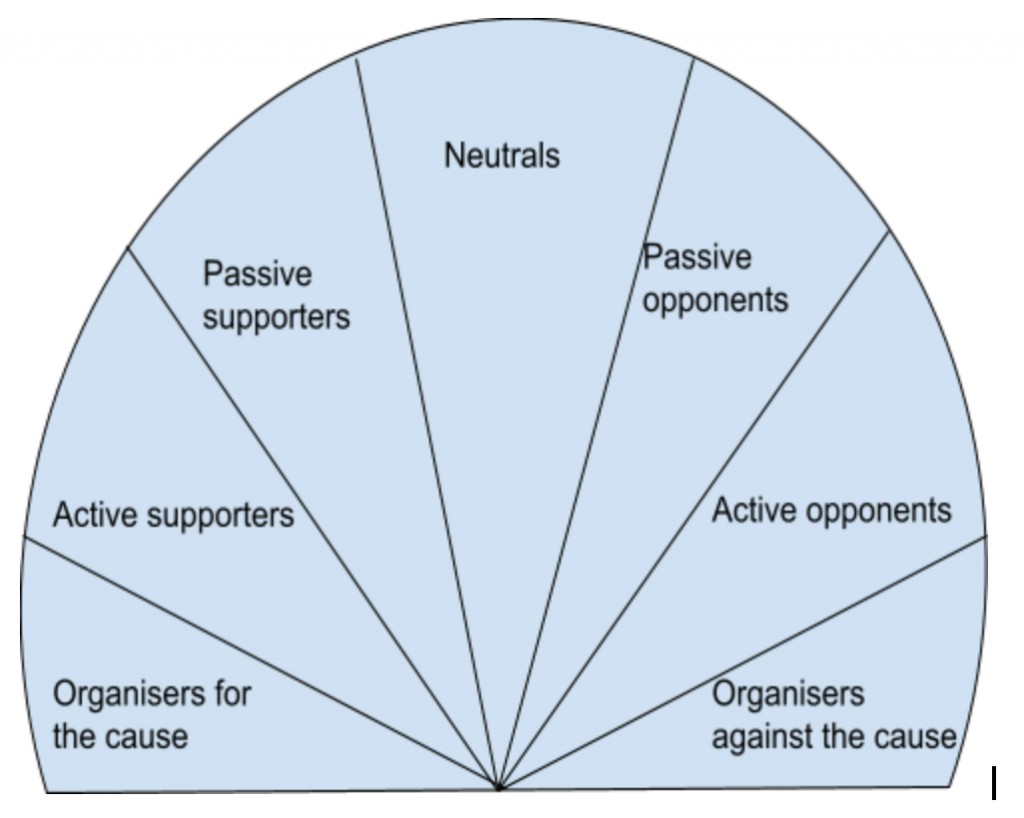Chapter 3
Spectrum of support
Creating a spectrum of support can help you work out who supports your cause so you can reach out to them and build a coalition determined to change your issue.
Crucially, it can also help you understand who your opponents are.
Understanding your support and threats can help you decide where to focus your campaigning efforts. You can start to win support from people who may previously have felt neutral – taking them from being a passive supporter into an active one.
Remember, it’s unlikely you will turn staunch opponents of your cause into active supporters for change. So focus your efforts on those who are neutral or supportive already. The more you take passive supporters onto a journey into being active supporters, the more public support on your issue will shift with you. If it increases enough, your opponents will start to move towards support, too, without you spending your time and energy targeting them.

- Organisers for the cause: the groups and organisations actively organising for your cause or issue.
Example: existing climate change organisers include Fridays for Future/ School strikers, Friends of the Earth, or grassroots movements in the Global South. Ideally, organisers work to move others towards greater involvement in campaigning on your issue.
- Active supporters: groups of people who are already active on the issue, but not directly organising / leading work.
Example: people who turn out on marches, write letters to local and national governments, and stand in solidarity through donating funds, raising awareness and taking action where they can.
These active supporters have the potential to become organisers themselves. How might you invite an active supporter to take more of a leadership role?
- Passive supporters: groups of people who care about your issue but are not currently active.
Example: a person who is concerned about climate change and thinks something must be done, but isn’t currently taking action themselves.
These passive supporters have the potential to become active. How might you invite a passive supporter to take some kind of action, however small?
- Neutrals: people who do not think much about your issue or do not take a position on it.
How might you persuade these people to support your cause? Perhaps through raising awareness / showing how the issue is relevant to their lives?
- Passive opponents: people who do not support your cause – they oppose your aim, but are not active in their opposition.
Example: people who think taking action on climate change would force them to change their lifestyle
- Active opponents: people who take action against your cause.
Example: voters for a political party that would not take action on climate change or who would continue to support fossil fuels.
- Organisers against the cause: groups and organisations that actively lead the opposition to your cause.
Example: organisers against taking action on the climate crisis include fossil fuel companies, workers employed in carbon-intensive industries, regional and local governments in areas relying on fossil fuel extraction.
Now you can create your own spectrum of support on the basis of the graph above.